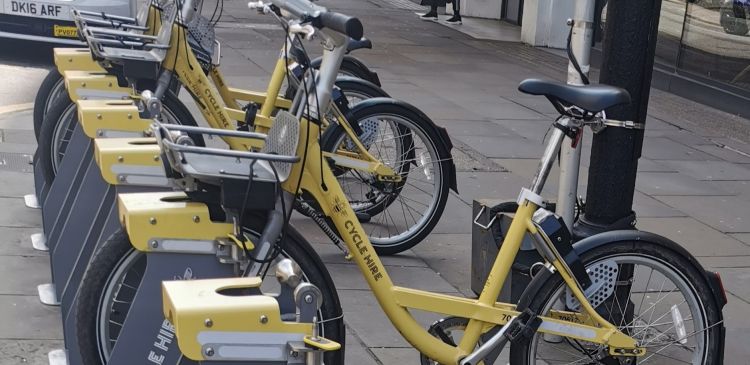The influence of public opinion on shared micromobility schemes

The study uses stereotypes to understand how the public feels about shared bike and e-scooter schemes.
A new paper has been published by Dr Zihao An and Dr Caroline Mullen from the Institute for Transport Studies, Chunli Zhao (Lund University and K2, Swedish National Centre for Research and Education on Public Transport) and Eva Heinen (Technische Universität Dortmund, University of Leeds and Norwegian University of Science and Technology).
The paper is titled ‘Stereotypes and the public acceptability of shared micromobility.’
Micromobility includes light vehicles that are powered by humans or electricity, such as bikes, electric bikes and e-scooters. Shared micromobility (SMM) means these are made accessible to multiple people for short trips, such as the new Leeds City Bikes electric bike scheme in Leeds city centre.
Public perspectives of shared micromobility
Although many people see SMM as positive in terms of being environmentally friendly, there are also negative opinions about the schemes causing additional road hazards, clutter and conflicts.
This study sought to further understand the public’s stereotypes of SMM and the relationships between those stereotypes and SMM’s acceptability. This understanding can help policymakers, regulatory bodies and SMM services improve the design and outcomes of the schemes.
The researchers surveyed the public from Greater Manchester, Utrecht and Malmö; three regions with very different levels of SMM and surrounding regulations.
They found that the public has mixed stereotypes about SMM, with many differences in the demographics between those of varied age, location and family status.
Overall, there were negative stereotypes of how the users of micromobility devices such as bikes, e-bikes and e-scooters interact with other road users.
At the same time, there were highly positive stereotypes regarding the ability of SMM to improve the current transport systems.
Finally, stereotypes played a crucial role in shaping the public acceptability of SMM.
Using stereotype models to plan transport
The study used a conceptual model of stereotypes – the stereotype content model – to gather public opinions of SMM.
They found this was a useful method and explained that investigating stereotypes helps to understand the perspectives of the public in a more nuanced way.
This is because stereotypes themselves reflect how the public feels, which in turn affects the outcomes of public schemes such as SMM. This is the case whether those stereotypes hold truth or not.
Understanding the public’s views is not only helpful feedback in terms of improving services but it also highlights the communication needs and objectives of any introduction or promotion of the services.
"If shared micro-mobility – bikes and e-scooters – are to be parts of our cities and towns then it is important that they are acceptable to users and non-users alike,” said Dr Caroline Mullen, Associate Professor at the Institute for Transport Studies.
“Our study found that understanding public stereotypes about shared micro-mobility can help explain whether, and why, different forms of shared micro-mobility are acceptable.
“Policymakers and providers can use this to design shared micro-mobility provision which contributes to inclusive and sustainable mobility.”
To read the full analysis and the implications of the results, visit the full study at Elsevier.
The study forms part of work for the project COmpeting and COmplementary MObility solutions in urban contexts (CoCoMo) funded by the Economic and Social Research Council (UK) (ES/W000547/1) and co-funded by JPI-Europe.




